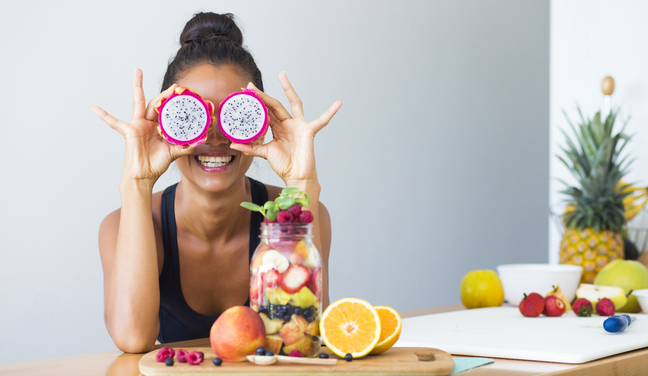The Importance of Nutrition for Dancers
I want to stay healthy, fit, and in shape for dance, but I have a craving for sweets. What are some tips to banish my bad eating habits and stop eating junk food?
A common misconception among dancers is the idea that a “healthy” diet means eating the “right” foods, avoiding the “bad” foods, and achieving a certain weight.
I often see this among new clients who feel that striving for the “perfect” diet is the key to unlock their performance and/or body goals.However, striving for perfection risks unhealthy habits, even when those habits are coming from a meaningful place. Remember: perfection doesn’t exist and when we strive to implement perfection or “clean” standards on our food choices, we risk entering a restrictive tunnel of eating, ultimately leading to burnout.
To best address the role of nutrition in a dancer’s diet, let’s look at the most common questions that I receive as a dance nutritionist.

Question 1: What types of food should dancers eat?
A balanced diet that includes all three macronutrients is key. These include: carbohydrates, protein, and fats. This ratio, or what I like to call the “nutrient mix,” is critical to a dancer’s menu.
Complex Carbohydrates are a dancer’s best source of energy. Complex carbs are found in minimally processed plant-based foods like whole grains, fruits, veggies, legumes, nuts, and seeds. Whole grains, such as oats, farro, bulgur, barley, and freekah, are particularly high in energizing nutrients like iron, zinc, and vitamin B12. Quinoa is technically a seed, but often eaten like a grain. Remember, non-starchy veggies (like leafy greens) should not replace grain-based carbs on your plate. Incorporate both as part of a balanced meal.
Protein has long been considered the star macronutrient in our diet-drenched culture. While protein plays a key role in muscle building, it’s important to remember that the body also requires both carbs and fats. Without these other two macros, your body will break down muscle (protein stores) for energy. Protein is found in both animal- and plant-based foods. Animal-based proteins like fish, chicken, eggs, cheese, milk, and yogurt are considered high in biological value. In other words, these proteins provide all essential amino acids for muscle building. Vegetarians and vegans can obtain all essential amino acids from plant-based diets. This however, requires proper planning. The good news is that today’s food landscape offers an abundance of plant-based quality proteins such as pseudo-cereals (quinoa and buckwheat) and ancient grains (farro and freekah). A diet rich in these foods as part of a variety mixed with veggies, nuts, seeds, and legumes can provide all essential amino acids to working muscles.
Fat is an essential nutrient for the body, despite our culture’s overwhelming fear of this macronutrient,. Fat promotes satisfaction at meals and keeps you feeling full for longer periods. Unsaturated fats are particularly beneficial to a dancer’s body, which undergoes a great deal of wear-and-tear from high levels of physical activity. Unsaturated fats are predominantly found in oils (olive and canola), fatty fish (salmon, tuna), avocados, nuts, seeds, and nut/seed butters (my favorite!)
Question 2: How much water should a dancer drink during the day?
Our body is made of 60% water and therefore, it’s critical to hydrate throughout the day. I encourage that dancers aim for at least 3 liters of water daily. If dancing for longer than 60 minutes, remember to drink at least 8 ounces regularly, or every 45-60 minutes.
BTW- our thirst mechanism doesn’t activate until the body is already approaching dehydration. Instead of relying on thirst to dictate your water intake, plan ahead and remain diligent. A 1-liter reusable water bottle is a great way to remember to hydrate regularly. Refill it 3 times throughout the day!
Okay, but I really, really LOVE sweets! How do I banish these cravings!
You may be surprised to know that the best way to banish cravings is to ENJOY them! Though we sometimes feel that sugar is addicting, there is actually no solid evidence supporting this! There is evidence however, supporting the fact that RESTRICTIONS drive cravings and thus, overeating. Intense cravings often result from the moral value placed on sweets or other “unhealthy” foods. When we label these foods as “bad” and/or place these foods on a self-imposed “forbidden food” list, we subconsciously desire them. Rather than running from your cravings, enjoy them mindfully and as part of a well-rounded meal plan.


